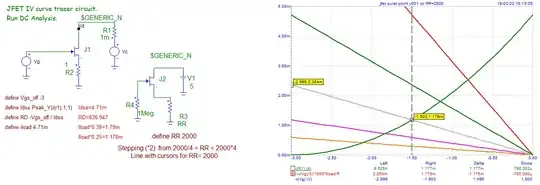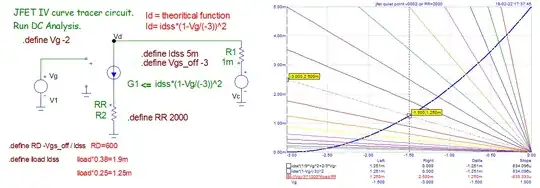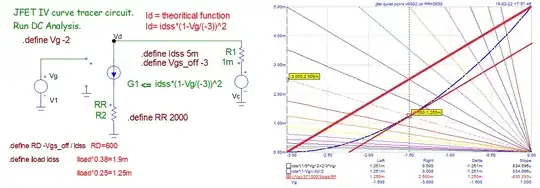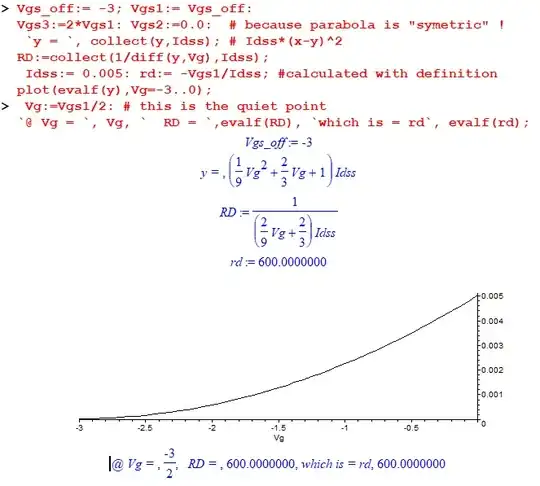When \$R_s=R_{DS} = \frac{-V_{GS(OFF)}}{I_{DSS}}\$, my textbook seems to suggest that \$I_{D}\$ equals \$\frac{I_{DSS}}{4}\$, but I'm not able to derive this. Any help?
My work:
\$I_D = I_{DSS}(1-\frac{V_{GS}}{V_{GS(OFF)}})^2 \$
\$V_{GS} = -I_DR_s = I_D\frac{V_{GS(OFF)}}{I_{DSS}} \implies \frac{V_{GS}}{V_{GS(OFF)}}= \frac{I_D}{I_{DSS}}\$
Solving these two equations (parabola, straight line) gives me
$$\frac{I_D}{I_{DSS}} = \frac{3 \pm \sqrt{5}}{2} $$
\$\frac{3-\sqrt{5}}{2} \approx 0.38 \ne \frac{1}{4}\$
What does the author mean when he says the drain current will be \$1/4\$ of \$I_{DSS}\$ and \$V_{GS}\$ will be half the cutoff voltage?
From my work, the operating point has equal ratios: \$\color{purple}{(0.38V_{GS(OFF)}, 0.38I_{DSS})}\$
I don't see how the operating can ever be \$\color{red}{(\frac{1}{2}V_{GS(OFF)}, \frac{1}{4}I_{DSS})}\$ as the author claims.





